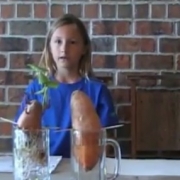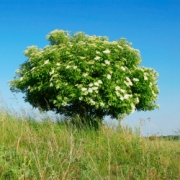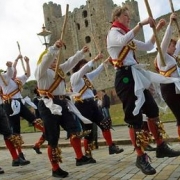Oak Apple Day
IN the Wiltshire village of Wishford Magna the inhabitants have had the right since the eleventh century CE to gather wood in Grovely Forest (now Grovely Wood, an indication of its reduced acreage and status).
 On the Tuesday following Whitsun they were able to cut down as much wood as they could bring away, but no transport other than a hand drawn woodcart was allowed to be used. In 1603 the villagers’ right was regularised and set down in a charter which begins, ‘The right has been since time out of mind ‘ The charter stipulates that in order to maintain their right the villagers must on the Tuesday after Whitsun go to Gravely Wood at break of dawn and cut a bough of oak, preferably one with an oak apple on it, and stand the bough outside their houses for the whole of that day. The inhabitants then had to dance a Morris from the village to Salisbury – a distance of six miles – and there publicly read the words of the charter. To which all the people replied, ‘Gravely! Gravely! Gravely! And all Gravely!’
On the Tuesday following Whitsun they were able to cut down as much wood as they could bring away, but no transport other than a hand drawn woodcart was allowed to be used. In 1603 the villagers’ right was regularised and set down in a charter which begins, ‘The right has been since time out of mind ‘ The charter stipulates that in order to maintain their right the villagers must on the Tuesday after Whitsun go to Gravely Wood at break of dawn and cut a bough of oak, preferably one with an oak apple on it, and stand the bough outside their houses for the whole of that day. The inhabitants then had to dance a Morris from the village to Salisbury – a distance of six miles – and there publicly read the words of the charter. To which all the people replied, ‘Gravely! Gravely! Gravely! And all Gravely!’
In the early part of the 19th century efforts were made by the owners of Grovely Wood, the Earls of Pembroke, to buy out the villagers’ rights. But they declined several offers of compensation to extinguish their rights and in 1820 the Earl sued four Wishford women for trespass. The High Court found in the women s’ favour and confirmed the royal charter, but altering the day  for carting wood from the Tuesday after Whit to 29 May, anciently Oak Apple Day and for many years commemorated as the birthday of King Charles II. That king is also remembered on 29 May for having sheltered in an oak tree during his escape after the battle of Worcester in 1642. (Members of the Royal Stuart Society still commemorate 29 May as Royal Oak Day, which they also call Restoration Day.) Today the ancient right of the Wishford villagers is still exercised and something like a dozen woodcarts take part in the collection of wood.
for carting wood from the Tuesday after Whit to 29 May, anciently Oak Apple Day and for many years commemorated as the birthday of King Charles II. That king is also remembered on 29 May for having sheltered in an oak tree during his escape after the battle of Worcester in 1642. (Members of the Royal Stuart Society still commemorate 29 May as Royal Oak Day, which they also call Restoration Day.) Today the ancient right of the Wishford villagers is still exercised and something like a dozen woodcarts take part in the collection of wood.
Although they no longer dance all the way to Salisbury the procedure is still otherwise strictly observed. The four warren of Wishford are commemorated by four local women dressed in the fashion of 1820 who dance two morrises in the centre of Salisbury before the reading of the charter. This accomplished, all return to Wishford and a hearty dinner known as the Oak Apple Feast, followed by a carnival procession from the Townend Tree, which includes villagers bearing boughs of oak through all the streets of the village. Many of the houses are decorated and prizes are awarded for the best decorated house, the best bough and the best-decorated woodcart.
Wishford Magna is a typical chalkland village by the river Wylye. The Wishford observances are referred to in an early document entitled ‘Sum of Auntient Customes belonginge to Wishford and Barford out of the Forrest of Grovely’, which confirmed the villagers’ right to gather wood in the forest, send cattle and pigs to graze there and kill one fat buck every Whitsuntide. The same paper testifies to the antiquity of the traditional visit to Salisbury: ‘The Lords, Freeholders, Tenants and Inhabitants of the Manor of Great Wishford, or so many of them as would, in ancient time, have used to go in a dance to the city of New Saran on Whit Tuesday, in the said County of wilts, and there they made their claim to the custom in the forest of Grovely in these words: Grovely! etc.’
Everywhere in England sprigs of oak were worn on 29 May, Oak Apple Day. They were sometimes called chitchat and in Hereford it was ‘Chit-chat Day’. According to the English Dialect Dictionary both Chit Jack and Shitsack were in use at Barford, the next village to Wishford. These customs clearly link 29 May with Jack in the Green, Robin Hood, May Day and Summer Finding.






Leave a Reply
Want to join the discussion?Feel free to contribute!